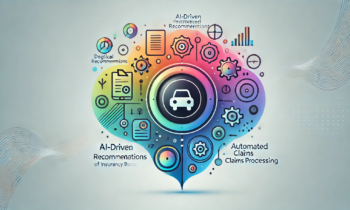Ubiquitous mobile broadband has the power to change the way the world communicates says Anatoli Levine, Director, Products and Standards at Softil
The advent of ubiquitously available mobile broadband is changing the way the world communicates, allowing literally everything – every piece of technology, no matter how small or large – to communicate. These communications create the stream of data which can be processed, analyzed and acted upon to improve and advance every aspect of human life.
Automation, autonomous functioning, artificial intelligence, virtual, augmented, and mixed reality – all of these technologies and many more are enabled and powered by ubiquitous mobile broadband, the communication paradigm that makes it all possible.
Ubiquitous mobile broadband is a commodity for developed nations, but it is beyond critical for developing nations. Developed countries always have to justify the move from older working technology to a newer technology with the question – “is it worth the investment?” Developing countries need not pose this question and can embrace the very latest technology the world has to offer, and thus leapfrog others.
Ubiquitous mobile broadband enables an endless array of technologies, each very powerful on its own, but reaching the next level when used together. Ubiquitous communication on the go, powered by connected smartphones capable of transmitting data at gigabit speeds, is just a simple basic level of the ubiquitous mobile broadband powered by a 5G network.
Group communications is another essential benefit of the modern mobile broadband system. Standards-based group communications, the ability to instantly talk to everyone on your team at the same time, are critical for many areas of human occupations. First responders, public safety, mining, transportation, even retail – group communications which now can easily include not only voice, but high resolution video and file transmissions, bring team efficiency and functionality to the next level.
Then you have the Internet of Things which is slowly transforming to the Internet of Everything with the help of ubiquitous mobile broadband. Billions of devices, some as small as a speck of dust injected into the human bloodstream for diagnostics, to the locomotive engine, are all connected to a network, capable of transmitting trillions of bytes of data at any moment, to be analyzed and then used to cure, manage and control to avoid disasters and to simplify human life.
Ubiquitous mobile broadband allows everything to communicate with everything. Think about cars and roads. Autonomous driving is a great feature which many drivers would find helpful. Today, autonomous driving technology is relying on the wide range of sensors and visual inputs, all processed by the system powered by artificial intelligence (AI). While this is great, the system would be a lot more reliable if it would be based on the actual communication of cars to other cars on the road. 3GPP developed such a set of standards for communication of vehicles to anything, hence the V2X abbreviation to include vehicle to vehicle and vehicle to infrastructure communications – all possible with the help of ubiquitous mobile broadband.
This same ubiquitous mobile broadband is also transforming the railway industry. Modern trains are capable of achieving speeds in excess of 500 km/h – and they need to be controlled with the utmost precision which is almost impossible for a human to achieve unless there are proper tools maintaining full connectivity between the train and railway operators at all time. Such a communication system, called the Future Railways Mobile Communication System (FRMCS), is currently being developed and is already entering trials in Europe – all powered by ubiquitous mobile broadband, the 5G network. You can imagine what the well-developed network of high-speed trains can do for developing countries for instance on the African continent and their economies.
There are many more examples of technology not only enabled, but made possible by ubiquitous mobile broadband. How about factories of the future? We have mentioned ubiquitous communication between devices (the IoT), but it doesn’t have to be limited to the devices alone – we can have entire systems, such as a factory, hosting millions of IoT devices of its own, to be connected with one another. When there is dependency of the products in one factory on the components or even raw materials from another factory, we can now have those factories talk to each other to align and optimize production of the final goods at the best cost and timing, all fully automated with the help of AI.
Let’s go back and take a deeper look at group communications. While it is a great bonus that machines and factories can talk to each other, the ability of humans to communicate efficiently amongst themselves is fundamental.
For all of us to enjoy the same level of technology, it should be based on open standards. Standards for group communications are developed by 3GPP, the same international standardization organization which helped the whole world to connect today – no matter where you are traveling, from Ghana to Japan to Russia to Greenland, you expect that you can push a button on your trusted iPhone and be able to talk to your family back in New York.
3GPP works through so called Releases, the packages of technology standards published together every few years. The group communications standards were first introduced in Release 12, taking its full form under the name of Mission Critical Communications in Release 13.
As you can see from the name, these standards first and foremost were aimed to address the needs of the users of technology who might be dealing with matters of life and death in their profession – first responders and public safety – police, firefighters, emergency medical technicians.
The initial build (Release 13) of technology was focused on voice communications only, thus it was called mission critical push to talk, or MCPTT for short. The next release added mission critical video and mission critical data communications (file, image, message exchange), and the technology changed its abbreviated name to MCX. Powered by the ubiquitous mobile broadband, MCX allows first responders to not only talk instantly in groups of any size, but exchange video, files (think – maps, building plans, equipment schematics …), send messages, see locations of all team members and much more.
While first responders are the initial user category for MCX technologies, as MCX service is becoming available through service providers, there are many other user categories which can benefit from the group communication capabilities – utilities, mining, transportation, hospitals, retail – the list is long.
Group communications are critical and essential but drawing from the power of the ubiquitous mobile broadband, we can really tie all different technologies together for the greater good. Let’s look at an example.
A firefighter is about to enter a building as a fire ravages through the 3rd floor of a 4-story structure. The firefighter’s team is observing him entering the front door, and the dispatch team has the same visibility via a video coming from the firetruck. What nobody can see is that the backwall of the building has just developed a dangerous crack and the firefighter might be in imminent danger. While nobody can see it, the crack is in the view of city surveillance cameras on the adjacent building. These cameras are part of the Smart City network of cameras, and all imagery coming from the 2,400 cameras installed around the city is constantly processed by an AI engine deployed in the Smart City framework.
The AI algorithm detects the dangerous structural development, and immediately raises an alert at the city level. As public safety broadband system is fully integrated with the Smart City portal, the automation algorithm detects that the danger alert affects the rescue team attending the fire at the same physical location, and the immediate peril alert is sent to the dispatch team, fire brigade communication group, and the rugged phone of the firefighter who just entered the building. The firefighter receives the alert and turns around to safely exit the building to assess the situation with the team before continuing the rescue mission.
This is not a movie episode – this is the illustration of the power of ubiquitous mobile broadband and its ability to enable all technologies to work together for the power of the greater good. From MCX to Smart City and IoT to the AI – this is not just acronym soup. This is the perfect example of 1+1=3, even though it makes no mathematical sense.
About Softil
Softil is the leading enabler of IP communications solutions for mission-critical telecommunications products and services. Softil’s BEEHD framework (SDK) is the key enabling technology behind a wide range of 3GPP MCX mission-critical communication solutions, devices, and products, as well as rich media applications for Enterprise and IMS/VoLTE. With more than 800 major corporations across the globe as customers, Softil’s many technological achievements include the pioneering of Voice and Video over IP, combining its unique expertise in standards-based signaling, multimedia and IMS. Softil’s award-winning suite of Protocol Stacks includes IMS, Diameter, SIP, MSRP, and others. Softil enabling technologies ensure simplified development and earliest roll-out of new products to market. Visit https://www.softil.com.
Ends
For further information, executive interviews and images, please contact:
Sagi Subocki
VP Products & Marketing
Mobile: +972 54 776 9634
Email: sagi.subocki@softil.com
Hugh Paterson, CEO
Whoosh PR,
Mobile +44 7465 962446


